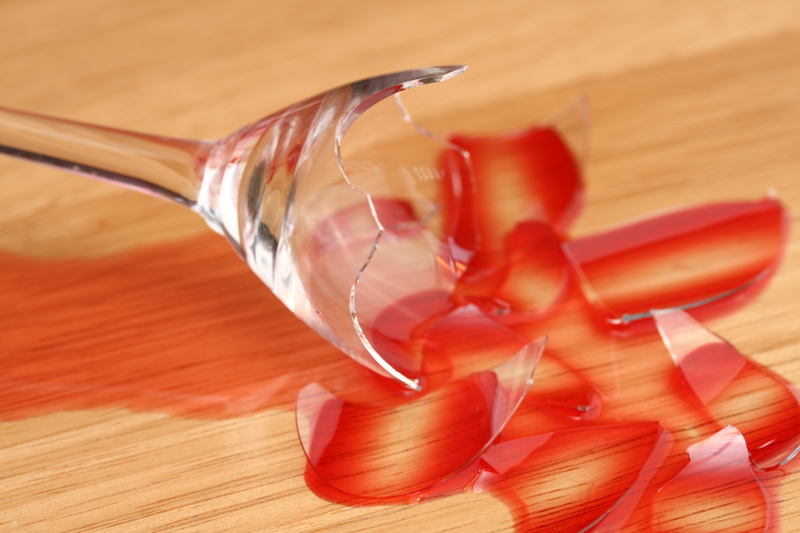Battle Mold on Window Sills with Confidence
Posted on 28/06/2025
Battle Mold on Window Sills with Confidence: Comprehensive Guide for a Healthier Home
Do you see unsightly black, green, or even orange patches gathering on your window sills? Mold isn't just a cosmetic nuisance--it can cause allergies, respiratory issues, and even compromise structural integrity. This in-depth article will equip you with everything you need to fight window sill mold with confidence. Let's get started!

Understanding Mold on Window Sills
Mold is a type of fungus that thrives in damp, stagnant environments--like your window sills! The combination of moisture condensation, dust, and poor ventilation creates a perfect breeding ground. You'll often spot mold as fuzzy or slimy patches, accompanied by a musty odor. Unfortunately, ignoring it doesn't make it go away; in fact, it only spreads further.
Types of Mold Commonly Found on Window Sills
- Cladosporium: Typically appears black or olive green. Common indoors and can cause allergies.
- Penicillium: Blue or green, associated with water-damaged surfaces.
- Aspergillus: Ranges from white to gray or green. Can trigger respiratory symptoms.
Knowing what you're up against helps in choosing the best mold removal strategy for window sills and protecting your home long term.
Why is Mold on Window Sills a Problem?
A bit of mold may look minor, but the impacts can be significant. Here's why you should never ignore mold on window sills:
- Health risks: Mold releases spores and allergens that can trigger sneezing, coughing, asthma attacks, and skin irritation.
- Structural damage: Over time, mold leads to paint peeling, streaks, wood rot, and corrosion of window frames.
- Negative aesthetics and odor: Black spots and musty smells make rooms less inviting and reduce property value.
- Mold spreads fast! If left unchecked, it migrates to curtains, drywall, and even heating or cooling systems.
Don't let window sill mold take over--empower yourself with knowledge and proactive action!
What Causes Mold to Grow on Window Sills?
Battle mold on window trims starts with understanding what enables growth in the first place. These are the usual culprits:
- Excess moisture: Condensation from temperature differences, especially during colder months, provides ideal mold habitat.
- Poor ventilation: Rooms with little air flow trap humidity near window surfaces.
- Leaky windows: Damaged caulking, weatherstripping, or windows themselves allow rainwater or humid air inside.
- Dust and organic matter: Accumulated dust provides food for mold spores to colonize.
By identifying the source, you'll not only remove existing mold but also prevent future outbreaks!
How to Remove Mold from Window Sills Effectively
If you found mold on your window sills, don't panic. Here's a safe step-by-step guide to remove window sill mold with confidence:
1. Gather Your Supplies
- Personal protection (gloves, safety goggles, and a mask)
- Scrubbing brush or old toothbrush
- Spray bottle
- White vinegar, hydrogen peroxide, or commercial mold remover
- Paper towels or disposable rags
- Plastic bag for disposal
2. Prepare the Area
- Open windows for ventilation (if possible)
- Remove curtains and blinds for thorough cleaning
- Place a towel beneath the window sill to catch drips
3. Apply Cleaning Solution
- White vinegar: Fill a spray bottle with undiluted vinegar, spray generously onto affected areas, and let sit for 1 hour.
- Hydrogen peroxide: 3% solution is safe on most surfaces. Spray and leave for at least 10 minutes.
- Commercial mold removers: Follow label instructions carefully.
Avoid using bleach on wood; it can damage finishes and doesn't kill mold roots on porous surfaces. Vinegar and hydrogen peroxide penetrate deeper.
4. Scrub and Wipe Away
- Use the scrubbing brush to gently work off mold and residue.
- Wipe clean with damp paper towels or rags, disposing of them immediately in a sealed plastic bag.
5. Dry Thoroughly
- Mold loves moisture! Use a fan or open the window to allow thorough drying.
- Consider using a dehumidifier if the room feels damp.
6. Inspect and Repeat
- Check back after 24-48 hours. If traces remain, repeat the process.
Pro tip: For severe cases where mold has penetrated window frames or drywall, it's smart to call a professional mold remediation company. They have the equipment and expertise to remove mold permanently and safely!
Prevent Future Mold Growth on Window Sills
Winning the war against window sill mold means putting prevention at the forefront. Here's how you can keep sills mold-free all year long:
Control Moisture
- Wipe away condensation: After showers, cooking, or rainy weather, wipe window sills with a dry cloth.
- Fix leaks: Repair or reseal any broken caulking and replace weatherstripping as needed.
- Increase ventilation: Use exhaust fans or open windows regularly to improve air circulation.
- Monitor humidity: Use a digital hygrometer. Indoor humidity should be kept below 60%--ideally between 30-50%.
Keep Window Sills Clean
- Regular dusting: Mold feeds on dust and organic debris. Clean window sills weekly.
- Use mold-preventive sprays: After cleaning, lightly mist sills with vinegar or a commercial anti-mold spray.
Enhance Sunlight Exposure
- Open curtains and blinds: Sunlight is a natural mold inhibitor. Allow natural light onto your window sills when possible.
Upgrade Windows if Necessary
- If your home suffers persistent condensation and moisture, consider investing in double-glazed or insulated windows.
Routine maintenance is your best defense. By being vigilant, you can battle mold on your window sills successfully and enjoy a cleaner, healthier home!
Natural Alternatives to Combat Mold Growth
If you prefer to use eco-friendly mold removal methods, there are a few natural solutions worth considering:
- Baking soda paste: Mix baking soda with water to form a paste. Spread onto the moldy area, scrub, and rinse after 15 minutes.
- Tea tree oil: Mix 1 teaspoon of pure tea tree oil with 1 cup of water in a spray bottle. Spray, let sit, then wipe clean.
- Lemon juice: The acidity in lemon can help break down mold spores, plus it leaves a fresh scent.
When using natural remedies, test a small patch of your window sill first to ensure there is no discoloration or damage to finishes.
Health Precautions When Handling Mold
Mold spores can pose health risks, especially for those with allergies or respiratory issues:
- Always wear gloves, goggles, and an N95 mask when cleaning mold.
- Children, elderly individuals, and people with weak immune systems should avoid areas being cleaned.
- If you feel unwell after exposure to mold, seek medical advice promptly.
Remember: If mold covers more than 10 square feet (about a 3x3 ft area), or keeps returning despite your efforts, it's time to get professional help.

Frequently Asked Questions: Battling Window Sill Mold with Confidence
1. Why does mold keep returning to my window sills?
A: Persistent mold is usually due to unresolved moisture problems. Check for hidden leaks, chronic condensation, or inadequate ventilation. Addressing humidity at the source is the only real solution for long-term mold removal on window sills.
2. Is it safe to paint over mold on window sills?
A: Absolutely not. Painting over mold only covers up the problem--mold will continue to thrive underneath. Always clean and treat mold thoroughly before repainting or refinishing surfaces.
3. Can vinegar really kill window sill mold?
A: Yes! Vinegar is an effective, affordable, and safe solution for most household molds. It penetrates porous surfaces and kills up to 80% of known mold species. For persistent or large patches, commercial products may be more effective.
4. When should I hire a professional to deal with mold?
- If mold covers an area larger than 10 sq ft
- If you notice recurring leaks, water stains, or peeling walls near windows
- If you have health conditions that may be triggered by mold exposure
Conclusion: Reclaim Your Home--Fight Mold on Window Sills with Confidence!
Left unchecked, mold on window sills can silently harm your health and your house. But with these proven strategies--identifying the cause, safely cleaning the mess, and preventing regrowth--you'll defend your living space and breathe easier. Stay alert, stay informed, and battle mold on your window sills with unwavering confidence!
Take action today:
- Inspect your sills regularly
- Control moisture and condensation
- Clean all visible mold promptly
For more expert advice on maintaining a healthy, mold-free home, check out our other articles!




